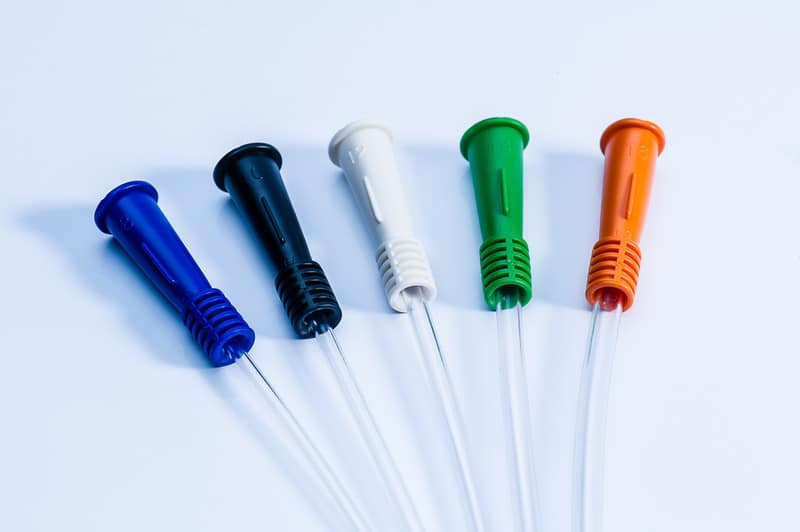A urinary catheter is a small, flexible tube that is inserted into the bladder to allow for urine drainage. The size of the catheter is determined by the external diameter of the tube, which is measured in millimeters. The most common gauge used for sizing catheters is known as the “French size.” The higher the number, the larger the diameter of the tube.
To determine the size of a urinary catheter, simply multiply the diameter length in millimeters by 3.
Understanding the different sizes of urinary catheters can help you make an informed decision about which type is right for you or your loved one.
The French Sizing System
The French sizing system is the most commonly used method for determining the size of a urinary catheter. The system is based on the diameter of the tube, with the higher numbers indicating a larger diameter. To determine the size of a urinary catheter using this system, simply multiply the diameter in millimeters by 3. This will give you the French size of the catheter.
For example, a catheter with a diameter of 8 mm would be considered a French size 24. Urinary catheters are available in a range of sizes to accommodate different needs.
Catheter diameter of 8mm X 3 = 24 FR
Note: French sizes are often abbreviated as FR. Available sizes range from 5 FR (1.7mm) to 24 FR (8mm). Both intermittent and Foley catheters use this sizing system, but Foley catheters also include a balloon size.
While the French sizing system is the most commonly used, it is not the only method available for determining catheter size. Another option is the Charriere sizing system, which is based on the circumference of the tube. To determine the size of a urinary catheter using this system, simply measure the circumference of the tube in millimeters and divide by 3.14. This will give you the Charriere size of the catheter.
No matter which sizing system you use, it is important to make sure that you select the correct size catheter for your needs. If the catheter is too small, it may not be able to properly drain the bladder. If the catheter is too large, it may cause discomfort or even damage to the urinary tract. Therefore, it is important to consult with a healthcare professional before selecting a catheter size.
Color-Coded Catheter Funnels

Color-coded catheter funnels are a great way to keep track of different sizes of catheters. The colors correspond to the French size, with red being the largest and blue being the smallest.
There are five common color-coded size choices:
| Color | FR-size |
|---|---|
| Blue | 10 FR (3.4mm) |
| White | 12 FR (4mm) |
| Green | 14 FR (4.7mm) |
| Orange | 16 FR (5.4mm) |
| Red | 18 FR (6mm) |
This can be helpful when trying to determine the right size for a particular patient.
Why Catheter Size Matters
The right size catheter to suit your anatomy will make the process of catheterization much more pleasant and comfortable. Utilizing a catheter with a greater diameter than your urethra may cause discomfort, friction, or discomfort.
If it’s extremely large it may not be capable of inserting it. In contrast, the wrong catheter narrow for your urethra could cause drainage to be slow and could let urine leak out through the catheter, which can be messy and can cause problems with the flow control.
In all of these instances, it’s crucial to choose the right size catheter that suits your body.
How to Determine the Right Size for You?
A catheter is a small tube that is inserted into the body in order to allow fluids to be drained or delivered. It is important to choose the right size catheter in order to ensure comfort and avoid complications.
There are a few factors that go into determining the right size catheter for you.
The first is the reason you are using the catheter. If you are using it for drainage, then you will need a larger size than if you are using it for delivery of medication.
Another factor to consider is the amount of fluid that needs to be drained or delivered. A large volume of fluid will require a larger catheter.
finally, your own personal comfort is a factor to consider. Some people prefer a larger catheter for more comfort, while others find that a smaller size is just fine.
If you are unsure of what size catheter to use, talk to your doctor or another medical professional. They will be able to help you determine the right size for your needs.
Different Types of Urinary Catheters

There are several different types of urinary catheters, which are designed for different purposes. The most common type of catheter is the indwelling catheter, which is inserted into the bladder through the urethra and left in place for a period of time. This type of catheter is typically used when a person cannot urinate on their own, such as after surgery.
Other types of urinary catheters include:
– External catheters: These are typically used for men who have incontinence or blockages in the urethra. The external catheter is a condom-like device that is placed over the penis and connected to a drainage bag.
– Intermittent catheters: These are inserted into the bladder through the urethra and then removed after a period of time. They are typically used for people who can urinate on their own but need help emptying their bladder completely.
– Foley catheters: These are indwelling catheters that are inserted into the bladder through the urethra and then inflated. This type of catheter is typically used for people who cannot urinate on their own and need long-term assistance.
Understanding the different types of catheters can help you make an informed decision about which type is right for you or your loved one. If you have any questions, be sure to ask your doctor or a medical professional.
What to Consider When Choosing a Urinary Catheter Size
When it comes to choosing the right size urinary catheter, there are a few things you need to take into consideration. The first thing is the purpose of the catheter.
If you are using it for short-term purposes, such as during surgery or after an injury, then you will not need a large size. On the other hand, if you are using it for long-term purposes, such as for urinary incontinence or bladder management, then you will need a larger size.
Another thing to consider is the age and weight of the patient. A small child or a petite adult will obviously need a smaller catheter than a large adult. And finally, you need to take into account the size of the urethra. A male will have a larger urethra than a female, so he will need a larger catheter.
With all of these things in mind, you should be able to choose the right size urinary catheter for your needs. If you have any questions or concerns, be sure to speak with your doctor or a medical professional. They will be able to help you make the best decision for your individual situation.
The Importance of Proper Sizing for Comfort and Safety
When it comes to catheters, size does matter. Choosing the right sized catheter is important for both comfort and safety reasons. A properly sized catheter will be more comfortable to use and less likely to cause any complications or injuries.
There are a few different factors that go into choosing the right-sized catheter. These include the width of the urethra, the size of the urinary opening, and the length of the catheter. The best way to determine the right size is to consult with a healthcare professional. They will be able to help you choose a catheter that is the right size for your individual needs.
Once you have chosen the right-sized catheter, it is important to use it properly. This means following the instructions for insertion and care. If you have any questions or concerns, be sure to ask your healthcare professional. With proper sizing and care, using a catheter can be a safe and comfortable experience.







